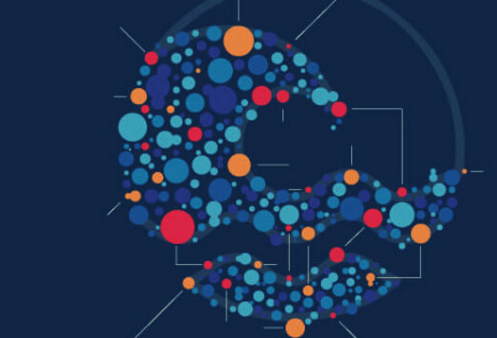Chemometrics for Quantitative Raman Spectroscopy
Raman spectroscopy is widely used to characterize pharmaceutical products or processes, mainly due to its desirable capabilities. It provides rapid measurements, it is non-invasive/non-destructive, and it is applicable to both off-line and in-/at-/on-line scenarios. Spectroscopic techniques can produce a large quantity of highly detailed and specific information, which can be converted into actionable information through the use of multivariate statistics and chemometrics.
Chemometrics is the use of mathematical and statistical methods to extract the maximum relevant information from chemical data. The field of chemometrics is far ranging and can be as simple as calculating the pH of a solution or as sophisticated as computing quantitative predictions from the spectrum of a complex mixture. Multivariate statistical methods used in chemometrics are essential to extract knowledge and facilitate comprehension of complex data sources with high degrees of dimensionality, such as Raman spectra. While complex data from sources such as Raman spectra often contain crucial insights on impactful key performance indicators (KPIs), this knowledge can be inaccessible through traditional univariate statistical methods. The science of chemometrics allows chemists, spectroscopists, chemical engineers, and other stakeholders to derive interpretable insight from their complex data.
This blog post provides a brief overview of chemometrics to enable pharmaceutical companies, chemical manufacturers, polymer producers, and other organizations to better understand their analytical instrument data. Well performed chemometrics gives better understanding of the underlying process, allowing for improved control and optimization, which in turn can improve quality or productivity, ultimately generating greater profit.
Chemometrics Overview – What’s the process, why does it work?
Chemometrics begins with chemical measurements and proper data collection. A core tenet is “garbage in, garbage out”. If your source of data is noisy (low SNR), has a small number of samples, and/or is unreliable in its measurements, then the predictive ability of your model will always be poor. This awareness leads to the conclusion that the best instrumentation should always be used, and the most representative and highest quality data collection should always be employed in order to derive all relevant details concerning the product or process in question.
The next step is pre-processing your data. The purpose behind this is to eliminate systematic noise whenever possible to enhance the extraction of information. For Raman data, the spectra are typically normalized to eliminate irrelevant intensity variation and may have various transformations applied, such as baseline corrections or derivatization to suppress baseline anomalies. Then, mathematical, and statistical methods are employed to extract relevant information from the data. Most often used with Raman data are Partial Least Squares Regression (PLSR), Principal Component Analysis (PCA), or Spectral Hard Modeling. These methods are able to handle data with high collinearity, something for which multiple linear regression (MLR) cannot account. The information extracted from the models can be used for a variety of purposes including exploratory analyses, regressions and quantification of chemical analytes, or classification of product quality. Finally, the knowledge provided allows comprehension and understanding of a system, which provides actionable information used to facilitate decision making.
Continuous Manufacturing for Quality Excellence: An Intensified Case for using Raman for Process Understanding and Control through Multivariate Analysis
Continuous manufacturing presents greater opportunities for throughput and scale-related profitability. There are also challenges from balancing the upstream and downstream processes in production flows. As with all regulated processes, documentation and agility remain important issues. Multivariate statistics and chemometrics software packages allow for the connected interpretation of multiple sensors and process variables, giving engineers full process visibility and better detection of excursions. Raman spectrometers are incredibly important sensors because of the abundance of information contained in the spectral data. Multiple analytes may be tracked and quantified in real time and process abnormalities related to the chemistry of a process are readily identified in Raman spectra. Having a rugged and reliable Raman analyzer is expedient to meet the regulatory needs inherent in continuous manufacturing, while increasing profitability. At Tornado, our Raman analyzers are compatible with a variety of chemometric software packages, and when combined, we provide unequaled Raman spectroscopy sensitivity, speed, quality, reliability, deployability and convenience for process and laboratory applications.
Summary
Chemometrics, when properly applied, can convert a mountain of data into a treasure trove of information. Chemometrics can enable exploratory analyses of multivariate data and can build reliable quantitative and classification strategies to understand, control and optimize processes. The combination of chemometrics and spectroscopic characterization represents an indispensable and highly versatile tool for laboratory and process analyses at all levels. With a rock-solid Raman analyzer, such as Tornado’s HyperFlux™ PRO Plus, combined with powerful software optimized for spectroscopic data, you can more easily resolve real-life challenges and achieve:
- Robust process analytics
- Reduced modeling costs
- Intuitive modeling workflow
- Easily interpretable models
- Simplified model maintenance
With our proprietary spectrometer technology enabling 10 times more photons being collected by the detector, users can measure at the same speed as a conventional Raman analyzer but get 3x better measurement quality.
For more information about our chemical analysis and measurement solutions, please contact us at Sales.Tornado@bruker.com.



